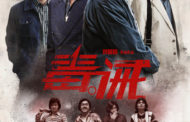 (Editor’s Note: One of our readers, Ken Caldwell, asked if he could review a film that many of us have only heard rumors about, Pulgasari, the 1985 pet project of none other than North Korea’s movie-loving dictator Kim Jong-il. How could we say no to that? Read on to find out about the insanely incredible true story behind Pulgasari and let us know what you think in the comments!)
(Editor’s Note: One of our readers, Ken Caldwell, asked if he could review a film that many of us have only heard rumors about, Pulgasari, the 1985 pet project of none other than North Korea’s movie-loving dictator Kim Jong-il. How could we say no to that? Read on to find out about the insanely incredible true story behind Pulgasari and let us know what you think in the comments!)
In 1985 moviegoers in North America were discovering the thrills of time travel with Marty McFly in Back to the Future and feeling jingoistic with Sly Stallone while he dominated the Commies in Vietnam and in Mother Russia. However, there was another beast dominating screens in….North Korea, and that beast’s name is Pulgasari. This movie is a creation of Kim Jong-il and Shin Sang-ok, a South Korean director he admired whom he had kidnapped. In 1978 Shin was captured by the North Koreans while he was investigating the kidnapping of his recently divorced wife. Pulgasari is a movie Kim Jong-il forced him to create because of his love of cinema, monster movies, and in order to promote his propaganda against the evils of un-checked capitalism.
The film starts off in feudal Korea (at least that’s what Wikipedia says, I can’t read Korean) where a lord ruthlessly controls his land. The lord comes to a village seeking the greatest blacksmith as well as metal to equip 100 soldiers. After all the metal is rounded up by taking all the villagers’ farming tools and household items needed for everyday life, the reluctant blacksmith tells the villagers to take the items and hide them. This lands the blacksmith, his apprentice and a few others in prison. In prison the blacksmith creates a rice doll of the Godzilla-minotaur hybrid monster Pulgasari. He blesses the doll with a spell and dies shortly after. While sewing, the blacksmith’s daughter she pierces her finger and bleeds on Pulgasari, which brings the monster to life. The villagers shortly learn the monster is on their side and requires metal to eat and grow bigger. What pursues is a constant battle back in forth between the villagers and Pulgasari and the king’s army. A few sequences are stolen from Wile E. Coyote by the lord in order to capture or kill Pulgasari. When seeing the traps in motion I was trying to keep an eye out for ACME markings but sadly none could be seen.
 The suit of the creature made the original Godzilla costume look realistic. Pulgasari had creepy bulgy eyes that would not move and seemed very unsettling. The only time the eyes did move where during random close-ups that seemed to be placed in the movie only to show that there was movement in the mask. These close-ups were obviously shot using a different head. Maybe Kim Jong-il could have taken some money from his $800,000 a year Hennessy budget and put it into better costumes.
The suit of the creature made the original Godzilla costume look realistic. Pulgasari had creepy bulgy eyes that would not move and seemed very unsettling. The only time the eyes did move where during random close-ups that seemed to be placed in the movie only to show that there was movement in the mask. These close-ups were obviously shot using a different head. Maybe Kim Jong-il could have taken some money from his $800,000 a year Hennessy budget and put it into better costumes.
The propaganda overtones were as subtle as a brick hitting you in the head. The poor villagers needed to bond together in order to overthrow the evil lord. It is ironic when you look at how Kim Jong-il ruled his country and the starvation and sufferings he puts his people through. The movie becomes a parody of his own country during his regime.
If you enjoy bad monster movies and some good old political irony I would recommend this movie. Again, do not go into this movie thinking you are going to see great craftsmanship. It is recommended purely for the strange but true backstory of the movie and to see the “great” Kim Jong-il fail at making a movie.
Rating: As a pure movie review this would be a 0 out of 10 but in a “so bad it is good” way I would say 8.5 out of 10.
Special thanks to Ken Caldwell for his review!















Recent Comments